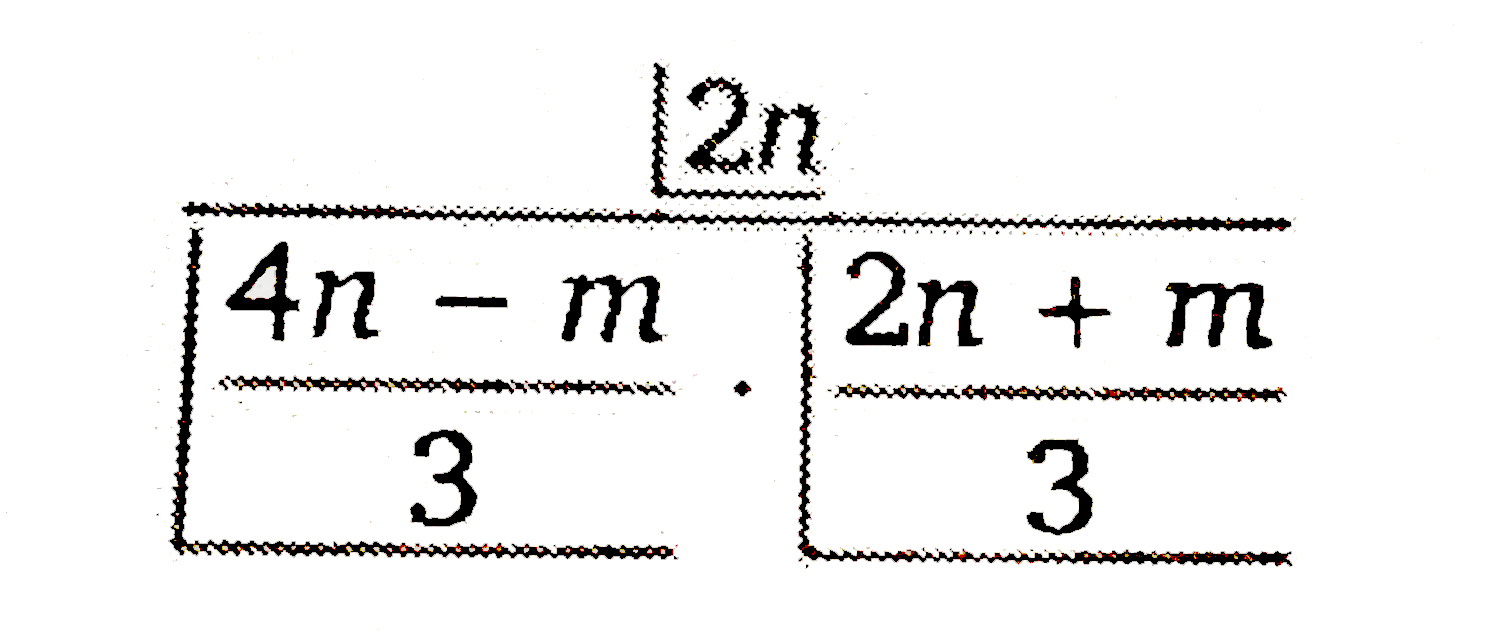Let x, y be positive real numbers and m, n be positive integers, The maximum value of the expression
xmyn(1+x2m)(1+y2n) is
The correct Answer is:B
To find the maximum value of the expression
E=xmyn(1+x2m)(1+y2n)
where x and y are positive real numbers and m and n are positive integers, we can use the concept of the Arithmetic Mean-Geometric Mean (AM-GM) inequality.
Step 1: Apply AM-GM Inequality
We start by applying the AM-GM inequality to the terms in the denominators:
1. For the term 1+x2m:
1+x2m2≥√1⋅x2m=xm
This implies:
1+x2m≥2xm
2. For the term 1+y2n:
1+y2n2≥√1⋅y2n=yn
This implies:
1+y2n≥2yn
Step 2: Combine the Inequalities
Now, we can combine these two inequalities:
(1+x2m)(1+y2n)≥(2xm)(2yn)=4xmyn
Step 3: Substitute Back into the Expression
Substituting this result back into our expression for E:
E=xmyn(1+x2m)(1+y2n)≤xmyn4xmyn=14
Step 4: Conclusion
Thus, we find that the maximum value of the expression E is:
14
1+x2m2≥√1⋅x2m=xm
This implies:
1+x2m≥2xm
1+y2n2≥√1⋅y2n=yn
This implies:
1+y2n≥2yn
Topper's Solved these Questions
- JEE 2019BOOK - CENGAGE ENGLISHCHAPTER - JEE 2019EXERCISE - Chapter 1
5 Videos
- JEE 2019BOOK - CENGAGE ENGLISHCHAPTER - JEE 2019EXERCISE - Chapter 2
7 Videos
- JEE 2019BOOK - CENGAGE ENGLISHCHAPTER - JEE 2019EXERCISE - chapter -3
1 Videos
- INVERSE TRIGONOMETRIC FUNCTIONSBOOK - CENGAGE ENGLISHCHAPTER - INVERSE TRIGONOMETRIC FUNCTIONSEXERCISE - Archives (Numerical Value type)
2 Videos
- LIMITSBOOK - CENGAGE ENGLISHCHAPTER - LIMITSEXERCISE - Comprehension Type
4 Videos
Similar Questions
If x,y are positive real numbers and m, n are positive integers, then prove that xnym(1+x2n)(1+y2m)≤14
View SolutionIf xandy are positive real numbers and m,n are any positive integers, then prove that xnym(1+x2n)(1+y2m)<14
View SolutionIf are positive integers, maximum value of xm(a−x)n in (0,a) is :
View SolutionLet x and y be the positive real numbers such that logxy=−14, then value of the expression logx(xy5)−logy(x2√y) is pq then q is _____________. { where p , q ∈N and are coprime to each other }
View SolutionIf n is a positive integer then find the number of terms in the expansion of (x+y−2z)n
View SolutionIf n is a positive integer then find the number of terms in the expansion of (x+y−2z)n
View SolutionIf x,y is positive real numbers then maximum value of xmyn(1+x2m)(1+y2n) is (A) 14 (B) 12 (C) m+n6mn (D) 1
View SolutionIf x,y is positive real numbers then maximum value of xmym(1+x2m)(1+y2n) is (A) 14 (B) 12 (C) m+n6mn (D) 1
View SolutionIf 'n' is a positive integer then prove that the coefficient foxm in the expansion of (x2+1x)2n is :

View SolutionIf 'n' is a positive integer then prove that the coefficient foxm in the expansion of (x2+1x)2n is :

View Solution
